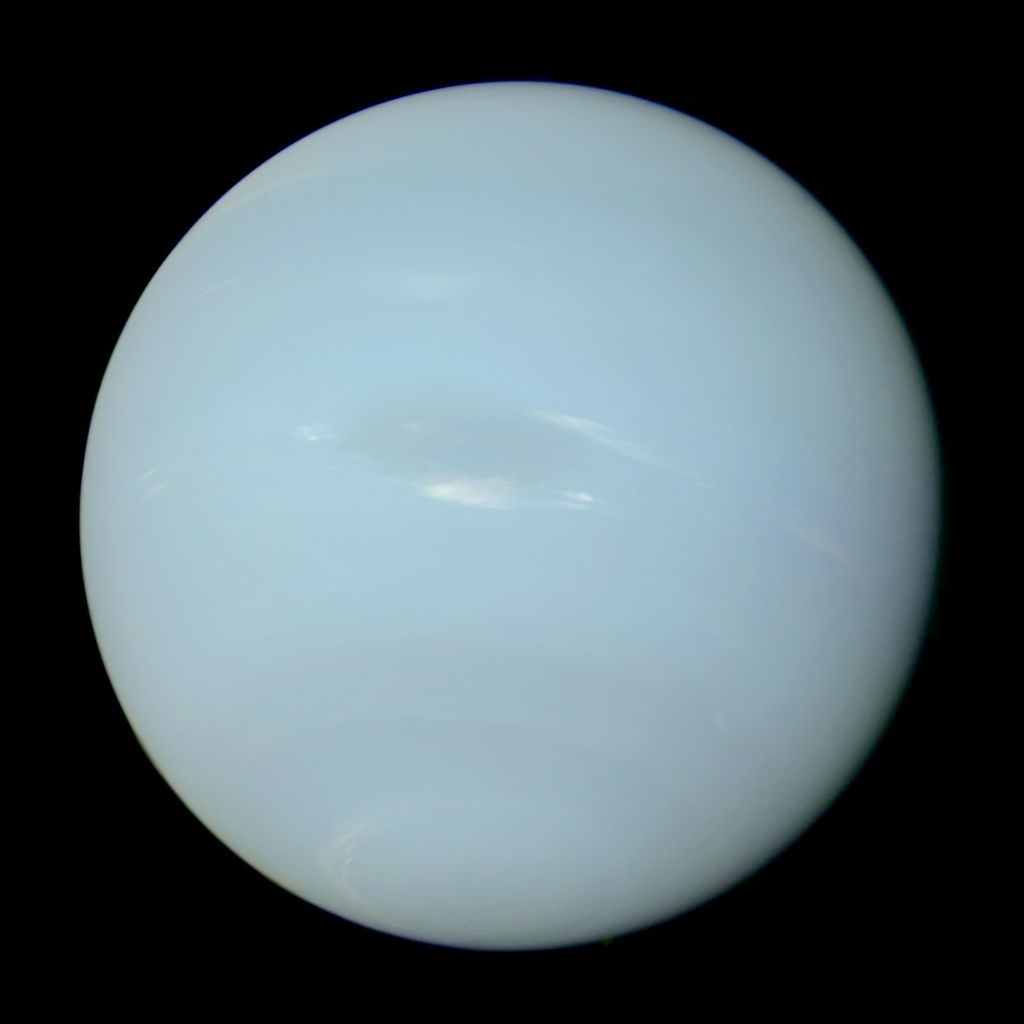A group of astronomers led by Scott S. Sheppard, David Tholen and Chad Trujillo reported the discovery of a new moon of Uranus and two new moons of Neptune. One of them is the faintest ever observed by a ground-based telescope.
New Uranus’ moon
The previously unknown Uranus’ moon was first spotted on November 4, 2023, during observations made using Magellanic telescopes. It was later found in archival photographs taken in 2021.

The newly found moon received the temporary designation S/2023 U1. In the future, it will be given its own name — according to tradition, the moons of Uranus are named after characters from Shakespeare’s plays. S/2023 U1 has a diameter of eight kilometers (today it is the smallest moon of the seventh planet found) and makes one orbit around the planet in 680 days. After this discovery, the number of known Uranus’ moons increased to 28.
Neptune’s New Moons
The two newly discovered moons of Neptune were first noticed during observations made in September 2021 by the Magellanic Telescopes and the Subaru telescope. They received the temporary designations S/2002 N5 and S/2021 N1. The S/2021 N1 moon turned out to be so dim that in order to confirm its existence and calculate its orbit, astronomers had to make additional observations with the ESO’s Very Large Telescope and the Gemini Observatory’s 8-meter telescope.

The diameter of S/2002 N5 is about 23 km, it takes almost 9 years for one orbit around the ice giant. The diameter of S/2021 N1 is 14 km, and the orbital period is 27 years. In the future, they will receive their own names in honor of the Nereids from ancient Greek mythology. After this discovery, the number of confirmed Neptune moons increased to 14.
All the new moons of Uranus and Neptune have elongated and inclined orbits. This suggests that they were captured by the gravity of the planets during or after their formation.
According to astronomers, the new observations will make it possible to detect all the moons of Uranus and Neptune ranging in size from 8 to 14 km. For comparison, Jupiter has most likely already found all moons with a diameter of over 2 km. For Saturn’s moons, this figure is 3 km.
According to https://carnegiescience.edu
Follow us on Twitter to get the most interesting space news in time
https://twitter.comne/ust_magazine


